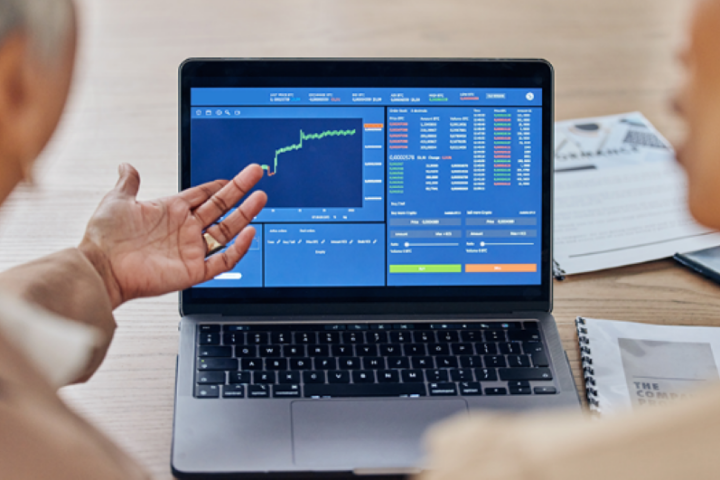* Real GDP to grow by 2.9% in 2016, 3% in 2017, says UCy *
The recovery of the Cypriot economy is estimated to gain momentum as real GDP is forecasted to expand by 2.9% in 2016, according to the July Economic Outlook published by the University of Cyprus Economics Research Centre.
The report added that “robust growth is expected to continue in 2017 as real GDP is projected to increase by 3.0%.”
Looking at the five main drivers of the projected increase in real activity, the ERC report said that real GDP and employment continued to grow in the first quarter of 2016, the unemployment rate continued to fall and domestic leading indicators improved further during the second quarter of the year.
Low international oil prices and subdued non-energy commodity prices are expected to continue benefitting activity in Cyprus in the following quarters through their effects on real incomes and demand.
The fiscal performance that has been bridging the gap between government expenditure and revenue is expected to contribute to a sustainable recovery.
A steady rise in deposits and modest growth in business loans over January – May 2016 suggest stronger normalisation tendencies in the domestic banking sector, underpinning an improved outlook.
 The external economic environment (marked by steady levels of economic confidence, moderate growth rates in the EU and the euro area, and low levels of European interest rates) continues to support the recovery in Cyprus.
The external economic environment (marked by steady levels of economic confidence, moderate growth rates in the EU and the euro area, and low levels of European interest rates) continues to support the recovery in Cyprus.
The downside risks to the growth projections are associated with the following factors, according to the ERC report:
– Deterioration of the external economic environment for Cyprus due to weaker than expected growth in the EU and the euro area as a result of (i) worsening growth prospects in emerging market economies, and (ii) uncertainty stemming from the UK’s exit process from the EU. Fragile euro area economies, including Cyprus, are more susceptible to setbacks in the recovery of the euro area, for example, by experiencing increases in their borrowing costs.
– A slowdown in output growth in the UK and further depreciation of the pound against the euro, as a result of increased political and economic uncertainty following the Brexit vote, are expected to directly affect the Cypriot economy, primarily through weaker exports of services (tourism) and goods.
– Increased geopolitical turmoil adversely affects investor sentiment and tourism with a possible negative impact on domestic activity.
– The high private indebtedness levels that have led to deleveraging and increased default rates, continue to pose significant risks to the stability of the domestic banking system and to the outlook for the economy, especially via developments in property prices.
– The high public debt-to-GDP ratio renders Cyprus vulnerable to negative external shocks; thus delays in the advancement of structural reforms may create risks to public finances, Cyprus’s credibility and market borrowing costs, particularly during a period of high risk aversion in international markets.
The upside risks to the outlook include (i) an improved performance of the Russian economy as oil prices are rebounding, (ii) investment decisions linked mainly to tourism and energy, and (iii) public investment projects. Moreover, political instability or geopolitical tensions in neighbouring counties could have positive effects on domestic activity, if Cyprus is perceived as a less risky business or tourist destination.
CPI inflation in 2016 is projected at -1.8%. The negative inflation projection is driven by low international prices for oil and non-energy commodities that have kept the general price level subdued in the previous quarters. CPI inflation for 2017 is forecasted at 1.6% as activity growth is expected to continue and energy prices are anticipated to increase as suggested by leading indicators.
RECOVERY CONTINUES
The economic recovery in Cyprus continued in the first quarter of 2016 as real GDP increased by 2.7% year-on-year (y-o-y), at about the same rate as in the previous quarter. Except for financial and insurance activities, where real activity declined, and information-communication services where growth stalled, real gross value added in the remaining sectors increased (y-o-y) during the first quarter of 2016. Over the same period, private consumption grew at a slower rate compared to the final quarter of 2015 and government consumption declined y-o-y. In spite of the strengthening of construction investment, gross fixed capital formation contracted sharply in the first quarter. The contraction resulted from negative investment in transport equipment due to a decline in ship registrations, which, however, drove exports up (exports of ships). Consequently, in the first quarter exports grew strongly, while imports dropped and net exports maintained a positive sign.
Positive developments in many domestic leading indicators continued in the second quarter of 2016 (e.g. credit card usage by locals and tourists, retail trade indices, registrations of motor vehicles, cement sales, property sale contracts, registrations of new companies, tourist arrivals). The Economic Sentiment Indicator (ESI) strengthened further during the second quarter due to confidence improvements in retail trade, manufacturing and among consumers.
The growth rate of deposits picked up in April – May, while the contraction of loans accelerated during the same period. Nevertheless, in April – May loans to domestic non-financial corporations continued to grow and the decline of domestic housing loans slowed down. In April – May marginal reductions were registered for the majority of lending interest rates; currently lending interest rates are lower compared to the last two quarters.
The high level of non-performing loans, however, remains a major challenge to the banking system and the economy at large, in spite of the decline (local operations) recorded in March – April 2016. The unemployment rate (Eurostat) was falling during January – May 2016; the decline in the number of registered unemployed accelerated in the second quarter and the rate of increase in job vacancies picked up in April. During January – April 2016 a positive government balance was registered.
In the second quarter of 2016 the general price level (measured by the Consumer Price Index – CPI) contracted at about the same rate (2%) as in the first quarter. Negative inflation was driven by lower prices in the categories of housing-water-electricity-gas and transport, as a result of low international oil prices, as well as by price declines in the categories of food, recreation–culture and household goods.
FORECASTS
Projections for GDP growth and CPI inflation are constructed using quarterly data available up to the first quarter of 2016. Monthly indicators released by July 7 that contain information covering at most all the months in the second quarter of 2016 are also used. All forecasts presented in this bulletin are based solely on published data; thus, they only incorporate effects already captured by the quarterly series and the monthly leading indicators used in the estimations.
The forecasts for the y-o-y growth rate of real GDP for the second, third and fourth quarter of 2016 as well as for all the quarters of 2017 are shown in Table 1; projections for the whole of 2016 and 2017 are also provided.
– Based on the historical relationships between growth and numerous macroeconomic indicators, the recovery of the Cypriot economy is estimated to gain momentum as real GDP is forecasted to expand by 2.9% in 2016. Robust growth is expected to continue in 2017 as real GDP is projected to rise by 3.0%.
– The y-o-y percentage change of GDP for the second quarter of 2016 is projected at 2.6%; in the second half of the year growth is estimated to pick up, at 3.1%.
– Real activity is forecasted to grow at similar rates in 2017; during the first and second half of 2017 real GDP is projected to rise by 3.2% and 2.8% respectively.
– The y-o-y growth rates given in Table 1 imply quarter-on-quarter (q-o-q) percentage changes of 0.7%, on average, for the remaining three quarters of 2016; the implied q-o-q percentage changes for the first and second half of 2017 are estimated at 0.7% and 0.6%.







